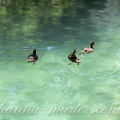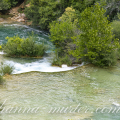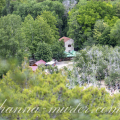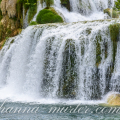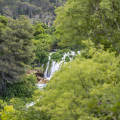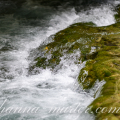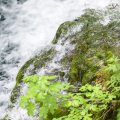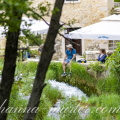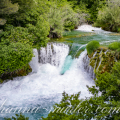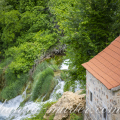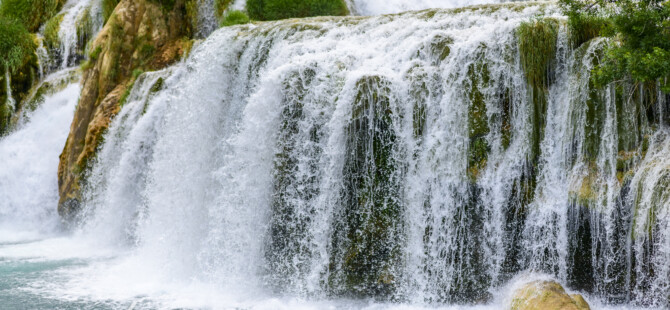
Krka National Park
Krka National Park
(Croatian: Nacionalni park Krka) is one of the Croatian national parks, named after the river Krka that it encloses. It is located along the middle-lower course of the Krka River in central Dalmatia, in Šibenik-Knin county, downstream Miljevci area, and just a few kilometers northeast of the city of Šibenik. It was formed to protect the Krka River and is intended primarily for scientific, cultural, educational, recreational, and tourism activities. It is the seventh national park in Croatia and was proclaimed a national park in 1985.
The Krka National Park is located entirely within the territory of Šibenik-Knin County and encompasses an area of 109 square kilometers along the Krka River: two kilometers downriver from Knin to Skradin and the lower part of the river Čikola. The Krka National Park is a spacious, largely unchanged region of exceptional and multifaceted natural value, and includes one or more preserved or insignificantly altered ecosystems.
Flora
The Krka National Park belongs to the Southern European (Mediterranean and sub-Mediterranean) region. Due to its special position and the mosaic distribution of various types of habitats, it is characterized by exceptionally rich and varied flora and fauna.
Eight hundred and sixty species and subspecies of plants have been identified within the territory of the Krka National Park, including several endemic Illyrian-Adriatic species.
Fauna
Eighteen species of fish inhabit the Krka River, among which ten are endemic, making the Krka a natural landmark of the highest category. Brown trout and Dalmatian Barbelgudgeon are a couple of fish that can be found in the ecosystem.
Patches of reeds, lakes formed along part of the river and swamped meadows abound in amphibians and birds, while thickets and stone quarries are home to reptiles.
The abundance of various species of birds (222), the structure of the bird communities and the great significance of the Krka for spring and autumn migrations make it among the ornithologically most valuable regions of Europe. There are numerous carnivorous birds in the area, notable ones are: Osprey, Short-toed Eagle, Golden Eagle, Bonelli’s Eagle, Lanner Falcon and the Peregrine Falcon. Other birds of interest are Eurasian Eagle-owl, European Bee-eater and Griffon Vulture.
Among mammals, there are 18 species of bats, which are generally endangered or near extinction in the rest of Europe, Long-fingered Bat, the Daubenton’s Bat, and the threatened European Otter.
Ria
A ria is the mouth of a river that flows into the sea, created by the submergence of the riverbed after the rise of the Adriatic sea level for 135 metres after the last quaternary glaciation. In the ria of the Krka River, seawater extends to the base of Skradinski buk. The ria of the Krka River is 23.5 kilometers in length.
This ria is considered an exceptional phenomenon, due to its lack of pollution and biological vitality. It is an area rich in shellfish, freshwater fish and saltwater fish.
Krka National Park Tourism
When you are at the Krka National Park there are several places of interest. The attractions and facilities available are various footpaths, sightseeing tours and presentations, boat trips, souvenir shops, a museum, and restaurants. There are also several archeological remains of unpreserved fortresses in the park’s vicinity dating back to as far as the roman times. They are Čučevo, Nečven, Bogočin, Ključica and Burnum.
MAP&Directions

